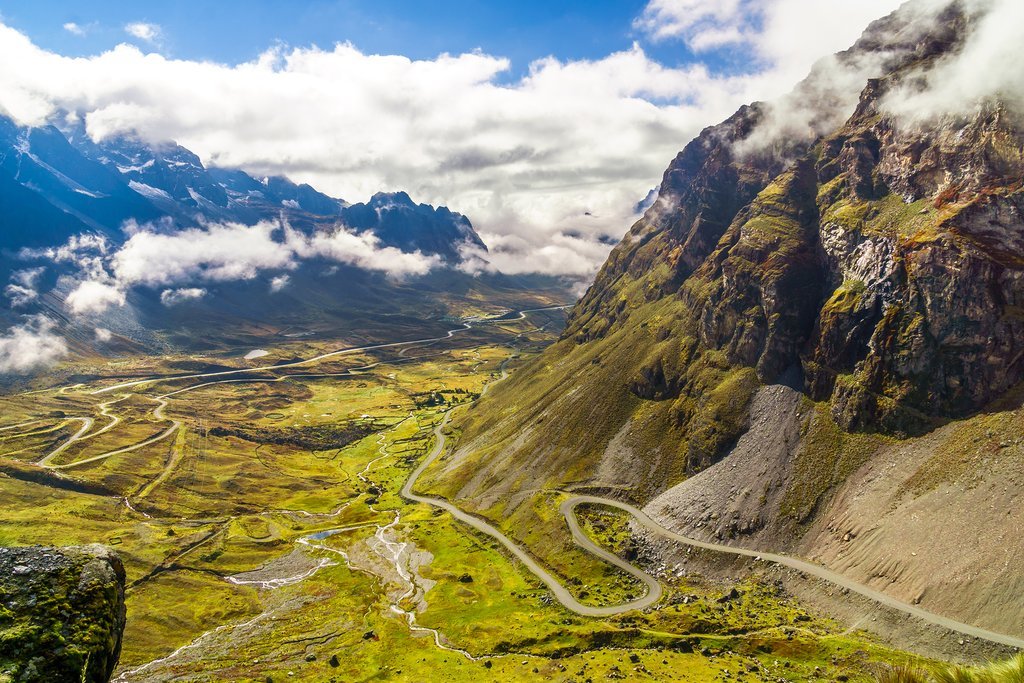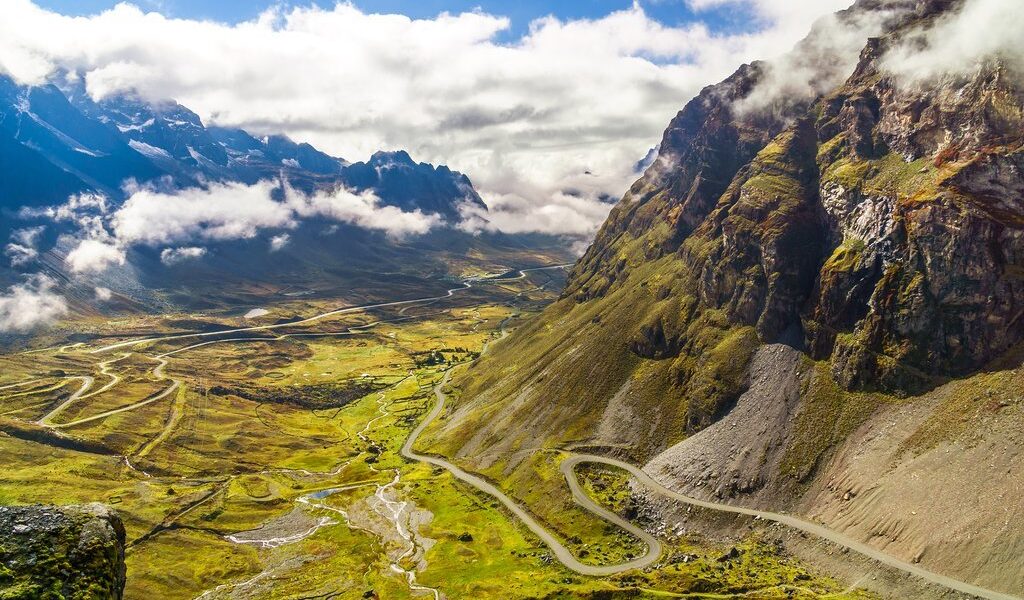
July is the peak season in Bolivia, with warm, bright, largely sunny days, though things can feel cooler up on the Altiplano. Such reliable weather makes this a brilliant month for outdoor activities, from hiking and mountain biking in the Andes to expeditions into the wildlife-rich Amazon. July is also one of the busiest months, ruling out special deals on accommodation and tours. Plan ahead if you want to visit during this popular time.
## Weather in Bolivia: A July Guide
Bolivia, a land of incredible diversity, mirrors its South American neighbors with a tapestry of geographical zones, each boasting a climate uniquely its own. From the towering, high-altitude Andes Mountains in the west, sharing a climate akin to the Andean reaches of Peru, to the verdant, humid embrace of the rainforest in the north, and onward to the savanna region gracing the south and east, largely defined by the expansive Gran Chaco, a predominantly semi-arid landscape sparsely adorned with trees, Bolivia presents a spectrum of climatic experiences. Understanding these distinct zones is key to planning your July adventure.
### The Andes in July: Crisp Air and Clear Skies
Imagine yourself in **La Paz**, a city perched high upon an Andean plateau, the peaks of the mountains serving as a majestic backdrop. This vibrant city offers a compelling glimpse into the climate prevalent throughout the Andean region. July in **La Paz** is characterized by cooler temperatures, a refreshing change for those seeking respite from warmer climes. Daytime highs reach a comfortable 54°F (12°C), perfect for exploring the city’s bustling markets and historic streets. As evening descends, the temperature dips, necessitating extra layers to ward off the chill. Nights can be quite cold, with temperatures plummeting to as low as 28°F (-2°C).
The mornings in the Andes often begin shrouded in mist, a veil that soon lifts to reveal a panorama of azure skies and the sharp, crystalline light beloved by photographers. The clarity of the air accentuates the dramatic landscapes, making it an ideal time to capture the beauty of the region. Venturing to even higher altitudes, such as the breathtaking **Lake Titicaca** or the otherworldly **Salar de Uyuni**, amplifies the cold, particularly at night. Temperatures around **Lake Titicaca** and the **Salar de Uyuni** at night hover around a frigid 21°F (-6°C), requiring serious cold-weather gear. The dryness of the air, however, makes the cold more bearable.
### Rainforest Adventures in July: A Window of Opportunity
July presents an alluring window of opportunity for those drawn to the heart of the Amazon rainforest. As the driest month of the year, with an average of just three days of rain, the region becomes far more accessible than during the wetter months. The city of **Cobija**, nestled near the Brazilian border in the north, serves as a representative gauge for the region’s weather patterns. During the day, temperatures climb to highs around 88°F (31°C), creating a humid, tropical atmosphere. Evenings bring a slight reprieve, with lows hovering around a balmy 61°F (16°C).
The relative dryness of July makes navigating the rainforest easier, opening up opportunities for wildlife viewing and exploration. While the humidity remains, the reduced rainfall allows for easier trekking and boating. The heat and humidity can still be intense, so packing lightweight, breathable clothing is essential. Be sure to bring insect repellent as well to protect against mosquitos.
### Savanna in July: Cool and Bright Days
In Bolivia’s savanna region, July stands out as one of the coolest and brightest months, offering a welcome respite from the heat that can characterize other times of the year. To get a sense of the typical weather, consider **Santa Cruz**, a vibrant city that serves as an excellent benchmark for the entire savanna region. Here, you can anticipate maximum temperatures of around 75°F (24°C), providing comfortable conditions for outdoor activities. Nighttime temperatures dip to lows of 59°F (15°C), creating a pleasant coolness for sleeping.
Rainfall is minimal, with an average of only five days of rain throughout the month, making July one of the driest periods in the country’s lowlands. This makes it an excellent time to explore the region’s diverse landscapes, from its sprawling plains to its unique cultural attractions. The clear skies and sunshine make it the perfect time for photography and enjoying the natural beauty of the region.
## Crowds, Costs, and Considerations for July Travel
July marks the arrival of high season in Bolivia, bringing with it a surge of visitors eager to experience the country’s outdoor wonders. Popular destinations such as the Andes and the Amazon teem with activity, and tours, especially those to remote locations, fill up quickly. If you have your heart set on a guided hike in the Andes or a boat trip into the Amazon, it is essential to plan ahead and book well in advance. You will likely be sharing trails and waterways with other travelers, but the reward is experiencing Bolivia at its blue-skied, wildlife-filled best. The weather in July is often ideal for outdoor activities, contributing to the month’s popularity.
The influx of visitors inevitably leads to higher prices for accommodations and tours. Be prepared to pay a premium for popular services, and book well in advance to secure the best deals. Prices can spike even higher during festivals like **16 de Julio** in **La Paz**, celebrating the city’s founding, and the vibrant **Fiesta del Santo Patrono de Moxos** held in the Beni region on July 31st. If you plan on attending these events, book your accommodations and transportation well in advance as prices are likely to be considerably higher and lodging difficult to secure at the last minute.
## Where to Explore in July: Region-Specific Recommendations
### The Andes: Majestic Peaks and Ancient Cultures
Your Andean journey might begin in **La Paz**, a city nestled at a breathtaking 11,940 feet (3,640 m) above sea level. **La Paz** is an ideal spot to acclimate to the altitude and map out your Andean adventure. The clear light and cool, sunny days make it the perfect month to engage in outdoor activities. Consider embarking on a reed boat excursion across **Lake Titicaca** to **Isla del Sol**, revered as the birthplace of Andean civilization, or opt for a thrilling jeep tour across the dazzling white expanse of the **Salar de Uyuni**, a UNESCO World Heritage site. The vastness of the salt flats is a sight to behold, and the dry weather of July makes for ideal conditions.
For seasoned hikers seeking a challenge, the snow-capped peaks of the **Cordillera Real**, soaring to heights of 19,685 feet (6,000 m), offer enticing alternative Inca trails with less crowded paths and stunning scenery. The dry conditions in July make it an excellent time to undertake a multi-day trek in this majestic mountain range.
### The Rainforest: Unveiling the Amazon’s Secrets
July presents the most favorable conditions for road travel to the rainforest, as drier conditions render the Amazon more accessible than at other times of the year. Venture into this biodiversity hotspot, and you’ll be rewarded with remarkable wildlife sightings, from vibrant macaws and playful capybaras to raucous howler monkeys. The popularity of the region means that accommodations in **Rurrenabaque** or **Trinidad** may need to be booked well in advance, particularly if you are interested in staying at one of the ecolodges nestled deeper within the jungle.
### The Savanna: A Land of Plains and Missions
Bolivia’s lowland plains beckon with their cooler, drier days during July, inviting exploration and discovery. The tropical and vibrant city of **Santa Cruz** is an excellent base for exploring the region, offering intriguing museums, a lively music scene that permeates the plazas, and a festive atmosphere that continues long into the night. **Chiquitania** entices visitors with its unique Jesuit mission heritage, showcasing meticulously reconstructed churches that stand as testaments to the region’s rich history. Further west, nestled in the Andean foothills, lies the tranquil town of **Samaipata**, a gateway to the pre-Inca site of **El Fuerte**, an archaeological wonder.
## What to Experience in July: Activities and Adventures
### The Andes: Immerse Yourself in Culture and Nature
Most Andean adventures commence in the sky-high city of **La Paz**. Spend a few days immersing yourself in its vibrant markets, observing the bustling street life, and exploring the burgeoning food scene. July is the perfect time for outdoor activities, whether you’re cycling the thrilling road through the Yungas down to **Coroico**, hiking into the remote reaches of the **Cordillera Central** mountains, or dedicating a few days to exploring the indigenous villages and Inca ruins that dot the shores of **Lake Titicaca**.
A 4×4 tour provides an exceptional way to experience the immense, white expanse of the **Salar de Uyuni**, as well as its surrounding geysers, hot springs, and flamingo-filled lakes. For a dose of culture, journey to **Potosí** to learn about the silver mines that once fueled the Spanish empire, or visit the capital city of **Sucre** for a blend of history and lively nightlife.
### The Rainforest: A Biodiversity Hotspot
The Bolivian Amazon is renowned as one of the most biodiverse regions on the planet, and July provides an excellent opportunity to witness its rich wildlife during its driest period. **Rurrenabaque** offers a relaxed atmosphere, where you can unwind in a hammock, embark on guided hikes or boat trips into the jungle, explore the pampas, or retreat to an ecolodge nestled in the heart of the remote and lush **Madidi National Park**. The colonial city of **Trinidad** serves as another gateway to the rainforest, offering a blend of culture and history.
### The Savanna: Exploring Jesuit Missions and Following Che’s Trail
After a short stay in **Santa Cruz**, take advantage of the dry, crisp weather by venturing further into the savanna. **Chiquitania** is a worthwhile day trip from the city. Tour the Jesuit mission circuit, observing the reconstructed churches at the heart of communities founded by missionaries before their expulsion from Spanish America in 1767.
Alternatively, base yourself in **Vallegrande** to follow in the footsteps of Che Guevara along the **Che Trail**. For a taste of mountain air, walks through vineyards, and wine tastings, head to **Valle de la Concepción**.
## July Events: Festivals and Celebrations
* **16 de Julio, La Paz:** La Paz commemorates its founding anniversary with bustling markets, lively fairs, and festive celebrations.
* **Fiesta del Santo Patrono de Moxos, Beni Region:** In late July, the Beni region hosts this massive festival, featuring elaborate costumes, captivating dances, and exuberant parties.
* **Fiesta del Señor Santiago, Andean Foothills:** This religious festival, celebrated in late July, brings folk parades, vibrant costumes, dynamic explosions, and processions to small towns and villages in the Andean foothills.
B-181

